
The City of South Brisbane was a local government area on the southern side of the Brisbane River, Queensland, Australia. It was established in 1888 and existed until 1925 when it was amalgamated into the City of Brisbane. [1]

The City of South Brisbane was a local government area on the southern side of the Brisbane River, Queensland, Australia. It was established in 1888 and existed until 1925 when it was amalgamated into the City of Brisbane. [1]

When the Town of Brisbane was first established, it was predominantly on the northern bank of the Brisbane River, but included some areas south of the river, including the ward of Kangaroo Point and the ward of South Brisbane, the area between Vulture Street and the river. [2]
The Queensland Government passed the Divisional Boards Act of 1879 to establish a system of Divisional Boards for the purpose of providing local government for portions of the colony outside the boundaries of municipalities. The first Divisional Boards were proclaimed on 11 November 1879. Although the Woolloongabba Division was intended to be one of the first established, some delays occurred and it was not established until 9 January 1880. [3]
The role of a Divisional Board was to provide such public services as: [3]
Divisional boards were intended to administer areas with lower and more sparse population than that of a municipality. However, population of the Woolloongabba Divisional Board grew rapidly as the result of the introduction of a railway line into South Brisbane. On 7 January 1888, the Borough of South Brisbane was proclaimed a separate Municipal Institution. It combined the areas formerly part of the Division of Woolloongabba and the South Ward of the Municipality of Brisbane. However, the ward of Kangaroo Point remained part of the Town of Brisbane. [1] [3]
In 1891, work commenced on the construction of the South Brisbane Town Hall. The building was officially opened on 1 July 1892. [4] Although it was commonly known as the "Town Hall", it was officially called the South Brisbane Municipal Chambers. The town hall is now listed on the Queensland Heritage Register. [5]

The South Brisbane Memorial Park commemorates those of South Brisbane who died in World War I. On 20 May 1921 the South Brisbane City Council set aside a triangular block land bounded by Stanley Street, Vulture Street and Sidon Street opposite the South Brisbane Town Hall. On 6 August 1923 the park was dedicated Governor-General of Australia, Henry Forster. [6] [7]
The voters elected aldermen to represent them. The aldermen elected one of their number each year to be mayor; this election took place in February each year.

Sandgate is a northern coastal suburb in the City of Brisbane, Queensland, Australia. In the 2021 census, Sandgate had a population of 4,926 people.

South Brisbane is an inner southern suburb in the City of Brisbane, Queensland, Australia. In the 2016 census, South Brisbane had a population of 7,196 people.

Toowong is a riverside suburb in the City of Brisbane, Queensland, Australia. In the 2021 census, Toowong had a population of 12,556 people. It is predominantly a middle-class area (67.8%), with a median weekly household income of $1,930.

Dutton Park is an inner southern suburb in the City of Brisbane, Queensland, Australia. In the 2016 census, Dutton Park had a population of 2,024 people.

Annerley is a suburb in the City of Brisbane, Queensland, Australia. In the 2016 census, Annerley had a population of 11,336 people.

West End is an inner southern suburb in the City of Brisbane, Queensland, Australia. In the 2016 census, West End had a population of 9,474 people.

Woolloongabba is a suburb in the City of Brisbane, Queensland, Australia. In the 2016 census, Woolloongabba had a population of 5,631 people.

East Brisbane is an inner southern suburb of the City of Brisbane, Queensland, Australia. In the 2016 census, East Brisbane had a population of 5,934 people.
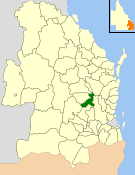
The Shire of Nanango was a local government area located in the South Burnett region of Queensland, Australia, about 100 kilometres (62 mi) northwest of the capital, Brisbane. The Shire covered an area of 1,738.4 square kilometres (671.2 sq mi), and existed as a local government entity from 1879 until 2008, when it amalgamated with several other councils in the South Burnett area to become the South Burnett Regional Council.

The City of Maryborough was a local government area located in the Wide Bay–Burnett region of Queensland, Australia, containing the urban locality of Maryborough as well as the southern half of Fraser Island. The City covered an area of 1,233.9 square kilometres (476.4 sq mi), and existed as a local government entity from 1861 until 2008, when it was amalgamated with the City of Hervey Bay, Shire of Woocoo and the 1st and 2nd divisions of the Shire of Tiaro to form the Fraser Coast Region.

The City of Charters Towers was a local government area in North Queensland, Australia, consisting of the centre and suburbs of the town of Charters Towers. Established in 1877, it was entirely surrounded by the Shire of Dalrymple, with which it amalgamated in 2008 to form the Charters Towers Region.

Stones Corner is an inner southern suburb of City of Brisbane, Queensland, Australia.
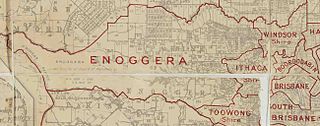
The Town of Ithaca is a former local government area of Queensland, Australia, located in inner western Brisbane.
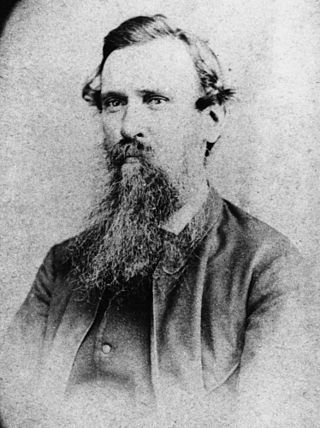
Thomas Blacket Stephens was a wealthy Brisbane businessman and newspaper proprietor who also served as an alderman and mayor of Brisbane Municipal Council, a Member of the Legislative Assembly of Queensland and a Member of the Queensland Legislative Council.

The Town of Brisbane was a local government area for Brisbane in Queensland, Australia from 1859 to 1903.
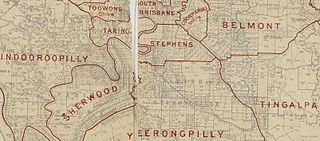
The Shire of Stephens was a local government area in the inner southern suburbs of Brisbane, Queensland, Australia. The shire, administered from Annerley, covered an area of 9 square miles (23 km2), and existed as a local government entity from 1886 until 1925, when it was amalgamated into the City of Brisbane under the City of Brisbane Act 1924.
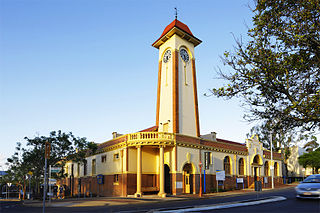
The Town of Sandgate is a former local government area of Queensland, Australia, located in northern Brisbane adjacent to Moreton Bay.

The Shire of Highfields is a former local government area on the Darling Downs in Queensland, Australia. It existed between 1879 and 1949.
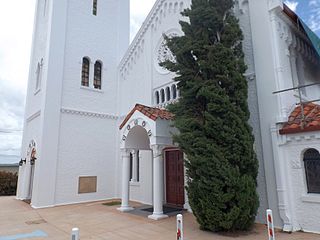
Holy Trinity Anglican Church is a heritage-listed Anglican church at 68 Hawthorne Street, Woolloongabba, Brisbane, Queensland, Australia. Since 1869, three church buildings have stood on this hill top site. The current church was completed in 1930. It was designed by the architect Eric Ford, featuring Romanesque and Spanish Mission Revival style architecture. Its preserved original architectural features make the church a traditional wedding venue of inner Brisbane. The church was added to the Queensland Heritage Register on 9 May 2008.

William Stephens (1857–1925) was a businessman and politician in Queensland, Australia. He was a Member of the Queensland Legislative Assembly and a Member of the Queensland Legislative Council.